No. 4 EAST 78th ST, UES: A BRIEF HISTORY
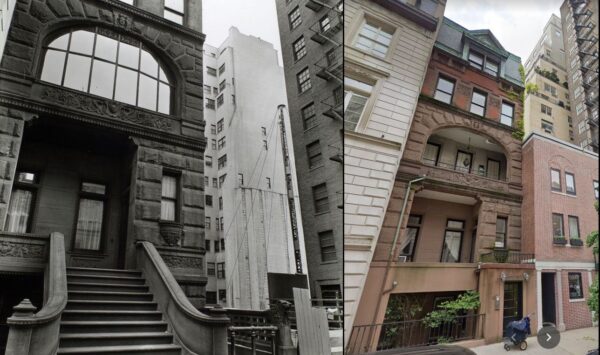
******************************************************************************************************************************** Brownstone Detectives investigates the history of our clients’ homes. The story you are about to read was composed from research conducted in the course of one of those investigations. Do you know the history of YOUR house? ******************************************************************************************************************************** According to Christopher Gray’s Streetscapes: Reader’s Questions, of the New York Times, No. 4 East 78th Street, is a Queen Anne-style house “built in 188 by the developer-architect Edward Kilpatrick. Upon completion, Kilpatrick sold it to the family of Arnold Falk, then living in a rowhouse at 129 East 64th. Mr. Falk was in the tobacco business on Water Street with his brother, Gustav, who lived in an adjacent house, 131 East 64th. On East 78th, Mr. Falk lived with his wife, Fannie, their two children and four servants. In the 1910’s and the 1920’s the house was occupied by the family of Jacob Dreicer, a principal in the Dreicer & Company jewelry firm founded in 1869, which was prominent in this period. There are now seven apartments in the building.” (New York Times, Sunday, 2 June 1991) Follow @BrownstoneDetec Share ———————————————————————————————————————– The Brownstone Detectives Brownstone Detectives is an historic property research agency. Our mission is to document and save the histories of our clients’ homes. From our research, we produce our celebrated House History Books and House History Reports. Contact us today to begin discovering the history of your home.
YOUR BROWNSTONE WAS NOT BUILT IN 1899
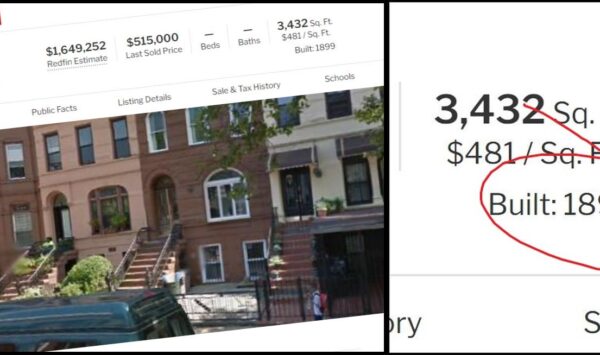
******************************************************************************************************************************** Brownstone Detectives investigates the history of our clients’ homes. The story you are about to read was composed from research conducted in the course of one of those investigations. Do you know the history of YOUR house? ******************************************************************************************************************************** We’ve all “Googled” ourselves, right? But have you ever Googled your house? Most people do this out of curiosity – just to see what might pop up. If you’ve ever done it, though, you were likely greeted with an extensive list of real estate sites that literally entreated you to click their links. Click on one of them and you may be surprised at what you find. Apparently, using their fancy algorithms, these sites can tell you nearly every detail under the sun about your property. These details include: the number of stories your house has, how many units are inside, the legal type of building it is, the district it lies within, its floor plans, the name of its neighborhood, its estimated value, various documents and permits filed, past sales, rental – and the list goes on and on… You may possibly even see images of the exterior of your rowhouse, as well as numerous snapshots of the inside (likely from a previous sale). For the most part you may note that everything – so far as you can tell – is relatively correct. There is, however, one very important piece of information that, on 99% of informational listings (including yours), is dead wrong… “BUILT IN 1899”? Why does nearly […]
HOW TO MOVE A ROW OF BROWNSTONES (1905)
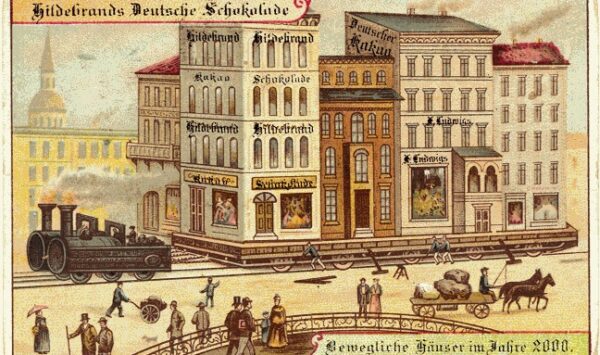
******************************************************************************************************************************** Brownstone Detectives investigates the history of our clients’ homes. The story you are about to read was composed from research conducted in the course of one of those investigations. Do you know the history of YOUR house? ******************************************************************************************************************************** It was called “one of the most unusual examples of housemoving” ever. Up until 1905, no one had ever attempted it. And it was moving two rows of five Brooklyn brownstone houses together, as a row each, one, across the street, and one across a block AND a street. Contractors, experienced in the business, had – to this point – only moved much lighter frame houses, even rows of frame house. But a row of brownstone houses? Impossible! Over a course of several weeks, though, two rows of brownstone houses were jacked up, stabilized – and then rolled away. These same brownstone houses now sit across the street on Jefferson Avenue – as though they had always been there. MAKING WAY FOR THE EXTENSION It all started in the Bedford-Stuyvesant section of Brooklyn, when the State of New York decided it needed more room for an extension to an armory it owned on Sumner Avenue. The armory, bound by Sumner Avenue on the west, Putnam Avenue on the north, and Jefferson avenue on the south, could only expand in one way – into two rows of brownstones. Behind the armory, on Putnam Avenue, sat a row of brownstones from the 1880s, while, on Jefferson Avenue, a more recent vintage of brownstones […]
THE RAREBIT FIEND OF 23 MIDDAGH ST (1906)
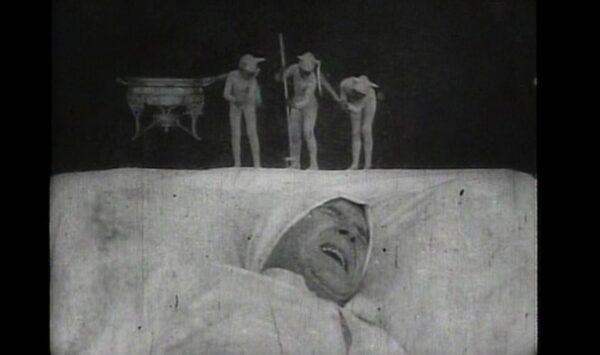
******************************************************************************************************************************** Brownstone Detectives investigates the history of our clients’ homes. The story you are about to read was composed from research conducted in the course of one of those investigations. Do you know the history of YOUR house? ******************************************************************************************************************************** At No. 23 Middagh Street in Brooklyn Heights, in the early 20th century, lived the veteran actor, John P. “Jack” Brawn, who starred in upwards of 24 motion pictures. Most notably, he starred in the first ever trick motion picture, 1906’s “The Dream of a Rarebit Fiend.” Brawn lived on Middagh with his wife, Ethel Brooke Ferguson, who had been his leading lady on stage and whom he married in 1903. THE DREAM A trippy movie, “The Dream of a Rarebit Fiend” is about a man, played by John P. Brawn, the titular “fiend,” who has an all-too-real dream after consuming a large meal of Welsh Rarebit. His dream, rather a nightmare – the result of an upset stomach, the film implies – was likely supposed to represent the penance that could expect to be paid for the sin of gluttony connected with living a life of overabundance. The director of the short film, Edwin S. Porter, based the film on a comic strip, using it as a vehicle to present his mastery of the technical aspects of film-making, which displayed a good deal of hands-on special effects work – double exposures, miniatures and other camera trickery. Few cinema-goers, it is certain, would have seen a picture like this at the time. […]
HOUSE HISTORY RULE No. 23 – PARAPETS (1910)
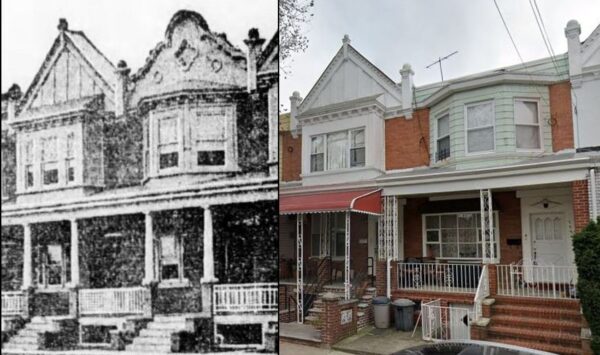
******************************************************************************************************************************** Brownstone Detectives investigates the history of our clients’ homes. The story you are about to read was composed from research conducted in the course of one of those investigations. Do you know the history of YOUR house? ******************************************************************************************************************************** House History Rule No. 23: “The more elaborate a house’s parapet, the less likely it will survive.” When you look up to the top of any brownstone, rowhouse, or townhouse, you sometimes see a parapet, an extension of sorts above the cornice which adds a certain grandeur or majesty to any building. The problem with many of these parapets, though, was their susceptibility to the elements. Over time, they wore, rotted, and simply fell apart. Eventually, these ornate elements of design were removed to prevent further damage to the structural integrity of the houses they graced. Built by Otto Singer in 1909, these 1-Family brick houses, exist on West 8th St. & King’s Hwy., in Bensonhurst. Follow @BrownstoneDetec Share ———————————————————————————————————————– The Brownstone Detectives Brownstone Detectives is an historic property research agency. Our mission is to document and save the histories of our clients’ homes. From our research, we produce our celebrated House History Books and House History Reports. Contact us today to begin discovering the history of your home.
BURIED ALIVE IN BROOKLYN!
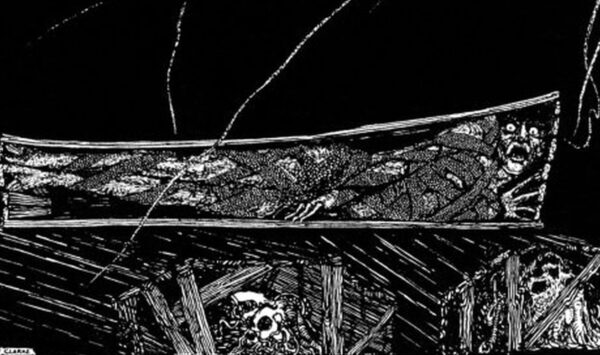
******************************************************************************************************************************** Brownstone Detectives investigates the history of our clients’ homes. The story you are about to read was composed from research conducted in the course of one of those investigations. Do you know the history of YOUR house? ******************************************************************************************************************************** Victorian Brooklyn was mortified at being buried alive. If newspapers and patents together are any indication of an age, then we know the fear was strong. Research performed toward the end of the 19th century indicated that approximately 700+ cases of being buried alive had been documented. Such premature burials apparently took place in nearly every major city, in numerous small towns, and across the world. Whether they were occurring in droves or not, though, was of little import. The overriding principal here was public perception. And the perception was this: Premature burials were happening ALL THE TIME. And perhaps they were. BROOKLYN & NEW YORK TESTAMENTS Brooklyn’s most famous case of being buried alive involved a Manhattan woman by the name of Virginia McDonald, who, after she had perished, was brought to Brooklyn and buried in Green-Wood Cemetery. The young woman’s mother, though, had “had a presentiment, shortly after her burial, that she was still alive.” The thought ate at the woman for some time until she decided to share her fears with her family members. They understandably attempted to assuage her, even resorting to joking with her when she could not be consoled. Finally, to settle her doubts, they had the casket opened for their mother. “The body was […]
THE CHANGING FACE OF MACON STREET (1908)
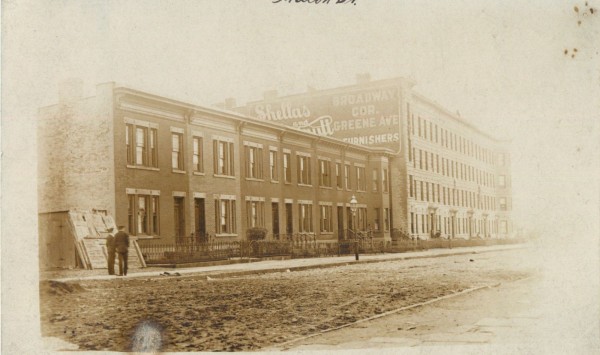
******************************************************************************************************************************** Brownstone Detectives investigates the history of our clients’ homes. The story you are about to read was composed from research conducted in the course of one of those investigations. Do you know the history of YOUR house? ******************************************************************************************************************************** While researching the history a local brownstone, we located an old postcard of a street in Bedford-Stuyvesant. The sepia paper photograph gives an idea of the innate promise of the neighborhood back in 1908 as it was still being built up with new brownstones, limestones, and rowhouses. That picture postcard, featured above, shows a stretch of Macon Street – replete with newly built rowhouses – that starts at the back of the Saratoga Library on Thomas S. Boyland Street (then, it was Hopkinson Avenue), and ends about halfway down the block before reaching a row of barrel-fronted 2-family houses and the one-time parking garage at the corner of Saratoga Avenue (now the Shirley Chisholm Day Care Center). Interestingly, this part of Macon Street still had its dirt (mud on rainy days) street as late as 1908. Residents of the area had been complaining to the City of Brooklyn (by 1908, the borough of Brooklyn) since the 1890s about the slow pace of street paving in the district. Home building had gone on at such a fast clip during this period that the city had struggled to keep up with the builders. The houses that are the focal point of the snapshot were the first put up on the block – what […]
A SPOTLESS TOWN IN SPOTTY CROW HILL (1903)
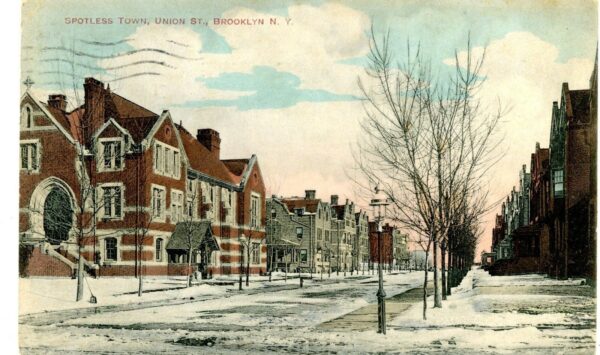
******************************************************************************************************************************** Brownstone Detectives investigates the history of our clients’ homes. The story you are about to read was composed from research conducted in the course of one of those investigations. ******************************************************************************************************************************** It was a novelty back then. An entire block of newly built houses was connected with underground cast iron heating pipes. “They’re all heated from a central heating plant,” the ad for the new houses stated. “To be free from worrying about the heating of one’s house is a blessing that you’ll appreciate.” “SPOTLESS TOWN” Frederick W. Rowe built them, and may have been inspired to use the name by a recent Broadway musical of the same title (which incidentally featured “a pair of midgets in a baby elephant costume and a dog trained to grab culprits by the seat of the pants” – it closed after one week). Who could fail, though, to see the sense of using a known name – one which, additionally, augured cleanliness?. Buyers were more and more attracted by the new homes being built in this “Eastern Parkway” section of town. Previously known as Crow Hill, comprised of a collection of shanties and pig sties, it entered a transitional stage and would later become the upper middle class Crown Heights around 1915. And these buyers were less and less interested in living in homes that already existed in the older areas – that were…well….less spotless. So the choice of name seemed appropriate for marketing purposes. BUT…CENTRAL HEATING??? By 1903, while central heating of […]
SUNSETTING ON A BED-STUY BOULEVARD (1909)
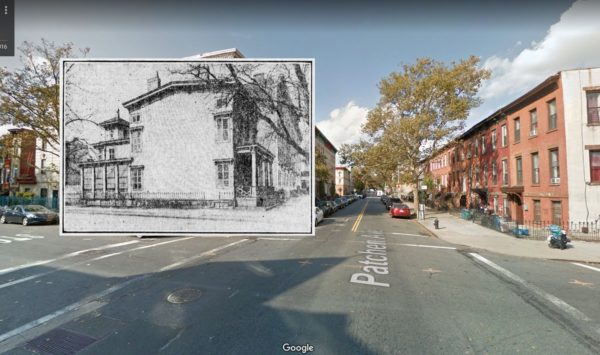
******************************************************************************************************************************** Brownstone Detectives investigates the history of our clients’ homes. The story you are about to read was composed from research conducted in the course of one of those investigations. Do you know the history of YOUR house? ********************************************************************************************************************************In 1909, a landmark was about to be destroyed. It was quite common, though, at the time for owners to tear down the antiquated wood-frame mansions that dotted Brooklyn’s landscape. Since the new brownstone houses had become all the rage in the 1880s, these tinder “firetraps” had become redundant, difficult to sell, and simply unstylish to live in. By the late 19th century, they were being sold, in many cases, for the value of their land as building lots. And with the demise of these historical artifacts, went some truly beautiful examples of mid-19th century architecture, few of which remain with us to this day. THE DE MILLE HOUSE The De Mille house was built around the middle of the 19th century for the family of that name, “and it has been a landmark in that region since the days when it was surrounded by open fields.” Yes, even Bedford-Stuyvesant – today chockablock with brownstone and masonry homes – was once – even before the advent of wood-frame homes – forested land alongside open virgin fields. As a matter of fact, the corner of Quincy and Patchen, in the 1850s, was little more than hills, dales, dirt lanes, and the vague promise of a future suburban city. “Broadway, which is nearby, was […]
THE LOST ART OF MOVING HOUSES (1900)
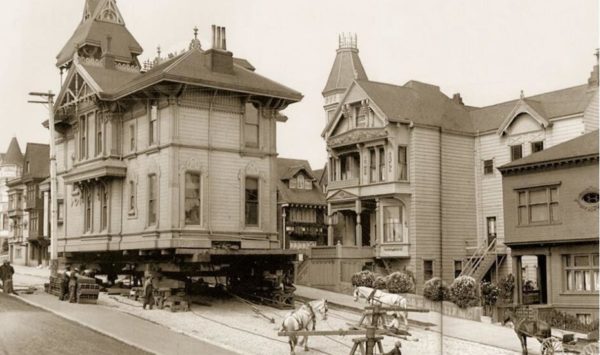
******************************************************************************************************************************** Brownstone Detectives investigates the history of our clients’ homes. The story you are about to read was composed from research conducted in the course of one of those investigations. Do you know the history of YOUR house? ******************************************************************************************************************************** An article in the 28 March 1900 edition of the Brooklyn Daily Eagle caught our eye the other day. It detailed an old practice of moving houses, and it took place in a time when the economics were such that their transport to another lot made more fiscal sense than tearing them down wholesale. In this story, however, the time it took to move this particular house took a toll on the neighboring residents. And, at one point, they gathered to tear the house down, themselves… THE HOUSE IN THE STREET The story took place in the early part of 1900 in Flatbush at the corner of Flatbush Avenue and Linden Boulevard. The subject was a frame structure that was being moved from that corner, although not quickly enough for local residents who protested the house’s temporary location on Linden Boulevard. And by “on Linden Boulevard,” we mean on the actual roadway itself. “A frame building stands in the middle of Linden boulevard, at its junction with Flatbush avenue. The building bears the sign of Vanderveer & Williamson, real estate agents,” the reporter started his story. Vanderveer & Williamson, we discovered – through combing the newspaper’s archives – were Adrian Vanderveer and Adrian N. Williamson, who had, by this point, had […]